Published in May 2021 by Pen & Sword and written by Graeme Gleaves, this hardback book is in landscape format, measures around 28.6 cm x 22.4 cm, has 168 pages, and 226 colour and black and white photographs and illustrations. It has a published price of £25, and at the time of writing it can be obtained online from Pen & Sword for a 10% discount and from Amazon for £8.75.
For several years, Pen & Sword has been publishing detailed histories of individual locomotive classes under its Locomotive Portfolios series. The series has both steam and diesel and electric sub-series, and this book continues that theme, but with a study of a complete network rather than a single locomotive class.
With 14 chapters and an appendix, the book provides a chronological history of Tyneside‘s electrical railways, beginning with the history of coal mining in the area, through the development of electricity and the birth of electric tramways, to the modern-day Tyne and Wear Metro. In between, the author describes the creation of the region’s electric railway network and the trains that ran on it through to Natonalisation and British Railways
In 1923 there was a disastrous fire at Heaton depot, which destroyed or severely damaged over half of the stock. Unfortunately, instead of devoting a single chapter to the fire, the author has chosen to give a short description of the fire in one chapter and how the network recovered from the fire in the next. As this was one of the network’s main events throughout its lifetime, surely it would have been better to have everything related to the fire in a single chapter.
An important figure in early railway electrification, and one who played an invaluable part in the development of the Tyneside electric network, was Charles Hesterman Merz. Both Merz and his consultancy, Merz & McLellan, are referred to several times, but in each case his name is consistently spelt Mertz.
The author frequently refers to “Diagram numbers”, but offers no explanation as to what these mean. They are also referenced in various tables that describe types of vehicle, when they were built, and their car numbers.
An annoying feature of the book is that there isn’t a comprehensive list detailing all units with their build dates, function, any renumbering details, and information on which motors were fitted to each group of units. Also, in Chapter 10, “British Railways Electric Stock” there is no table detailing the units, just references in the text.
The book has an excellent selection of illustrations dating back to the earliest days. Also, the text is very well detailed, although much of it is written as though the reader is already familiar with the electric network on Tyneside.
Although the book includes some details of the development of the network’s routes, I was surprised to see a photograph of the exterior of West Monkseaton station as the book is nominally about rolling stock.
While the author has done well to source many early photographs, the quality of later ones are not of the highest standard. Given the large amount of source material readily available, there is no excuse for many photographs taken in the 1950s and 1960s being excessively grainy.
It would have been of interest if a brief chapter on the North Eastern Railway electric autocars had been included. Instead of drawing electricity from third rails or overhead lines, they had a petrol engine driving a dynamo that supplied power to electric motors. It could be argued that they weren’t electric stock in the truest sense of the words, but as they were electrically powered and are of historical interest they merit inclusion.
For those of us around in the 1950s and 1960s, this is how we remember Tyneside electrics, with the lion and wheel emblem on the side of the leading driving car.
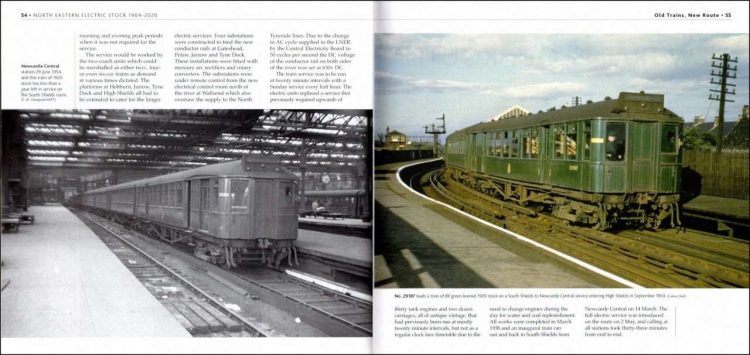
How things change, from the almost derelict unit on the left to being fully restored to museum condition on the right.
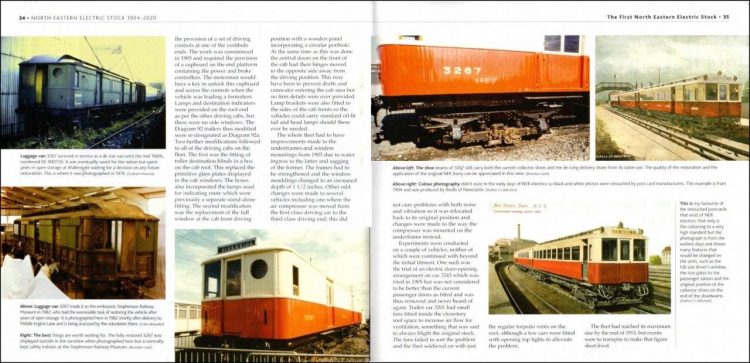
According to the author, during the war years, the RAF declared that the stock’s North Eastern livery of carmine and cream as in the previous pages was clearly visible to German planes. The fleet was therefore repainted in blue and cream, as seen below.
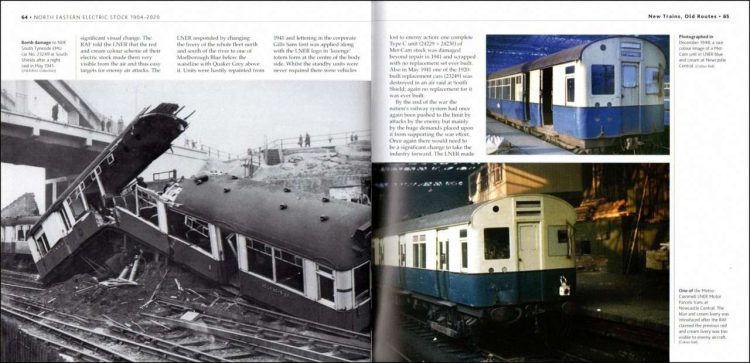
These must be the early days of the dreaded yellow stripes. Even though the photo at the lower left is not the best, the unit’s lack of yellow stripe makes an interesting comparison with the other units on these pages.
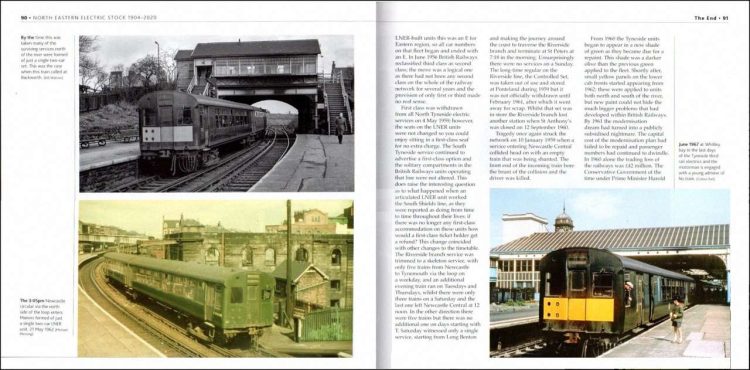
With the advent of the Tyne and Wear Metro, the stock bears very little resemblance to the arguably better-looking BR stock.
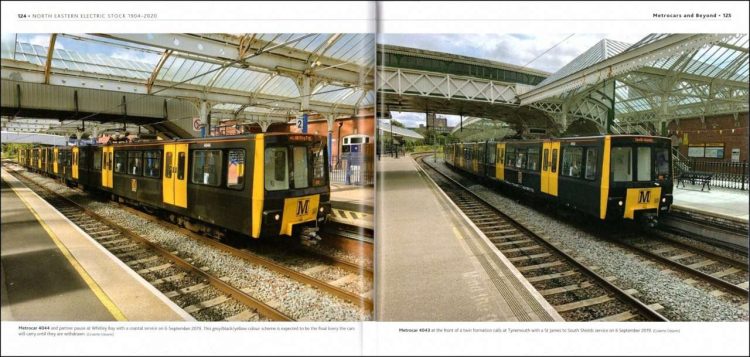
The author is to be commended for not concentrating solely on electric passenger stock. Looking out of place among electric multiple units are these electric shunting locos which worked the branch to Newcastle‘s Quayside. What is immediately noticeable is that they have pantographs, as the Quayside branch did not have a third rail but was electrified with overhead live wires.
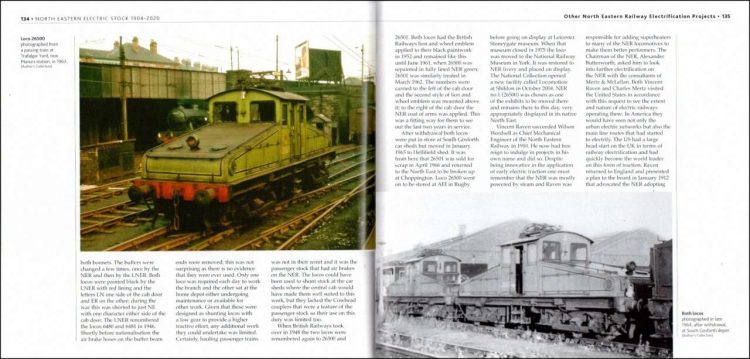
In summary, this book is a good overall appreciation of the development of the extensive electric network around Tyneside, but it lacks comprehensive details in a tabular format about the stock. The book features impressive selection of photographs, although some are excessively grainy or have been over-enlarged. Itis recommended for those with an interest in electric rolling stock and Tyneside’s railways.
The book is available to purchase from Amazon and from Pen & Sword.
We would like to thank Pen & Sword for providing RailAdvent with a copy of the book for review.






Responses